Local News
Volunteers from Shaarey Zedek, Unitarian Church, Bear Clan, and others band together to clean up Assiniboine river bank
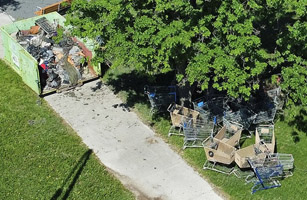
By BERNIE BELLAN Anyone who had driven, cycled, or walked over the west span of the Sherbrook bridge in the past year was bound to notice that the south bank of the Assiniboine River had become home to a great many homeless people.
With tents having sprung up, along with a wide assortment of possessions that the people who had decided to make that area home – at least temporarily, it wasn’t long before what was once a pristine area was now covered with a great deal of detritus associated with temporary living quarters. We’re not quite sure where the former inhabitants of that particular camp have now moved, but once they did go elsewhere they left behind tents, clothing, a lot of junk, and a huge number of shopping carts.
With the excessive amount of snow and rainfall that Winnipeg received this past winter and spring that area of the riverbank had turned into one heck of a muddy mess.
So it was that one member of Shaarey Zedek Congregation, Ray Singer, hit upon the idea of trying to organize a massive clean-up operation. Ray contacted representatives of the Unitarian Church, which is immediately adjacent to the area of the riverbank that had become one huge garbage dump. He also contacted Rena Elbaze, Engagement & Education Director for the Shaarey Zedek, to see whether Rena might be able to get word out to Shaarey Zedek members, asking for volunteers in the clean-up.
On Wednesday, June 22, the various volunteers, including members of the Shaarey Zedek, the Unitarian Church, also members of the Bear Clan, gathered at the Unitarian Church to begin the quite arduous process of cleaning up the abandoned camp. Volunteers had been asked to bring gloves, goggles, masks, and garbage bags with them, also rubber boots, sunscreen, mosquito spray, and water bottles. Volunteers were also told to wear long pants and long sleeved shirts. They were also told they would work in shifts – with one group working from 9 am – 11 am, while a second group would work from 11 am – 1 pm. As it was, Ray Singer told me the work took much longer than the four hours that had originally been thought would be sufficient.
A local refuse business donated a large bin for the day – and as you can see from the picture accompanying this story, it was filled up. But, as other pictures will attest, the riverbank had become thoroughly softened, not only by the huge amount of snow and rain, but also by the Assiniboine River overflowing its banks this spring. Pulling debris out of the muck was an enormous challenge and, as Ray also noted, many shopping carts were simply stuck in the river and could not be removed.
One of the principal organizers of the clean-up was Michael Thiessen, who is an experienced Bear Clan member, Ray told me, and who has participated in many clean-up operations in the past. Ray also wanted to acknowledge the help provided by “Sonya” of the Unitarian Church, who “was instrumental in getting their volunteers out. Ray added that “Rena Elbaze was similarly effective re marshalling SZ volunteers.”
The volunteers were also joined unexpectedly by River Heights Councillor John Orlikow, along with former City Councillor Jenny Gerbasi.
In a follow-up email we received from Ray Singer, he noted that “We filled a 14 cu. metre bin ( 8x11x4.5 feet high). John Orlikow, along with other members of the community today hauled out almost 2 dozen shopping carts and filled a bin full of encampment debris from the Assiniboine River off of Wellington Crescent (next to the Shaarey).” Ray added that, despite having asked for assistance from the City of Winnipeg’s Public Works Department, the volunteers were turned down. Apparently city workers thought it was too dangerous to bring equipment that would have been very useful in the operation – such as front end loaders, on to the river bank.

In a surprise twist to the story, the next day (Thursday, June 23), Ray says that he was alerted to the fact that somehow, the shopping carts that had been removed from the muck had been fashioned into a shopping cart pyramid. (One can only imagine the effort that would have taken!) Now, if only whoever built that shopping cart pyramid had expended the same amount of energy helping in the clean-up operation itself. (Or maybe they did. Who knows? Perhaps it was some of the volunteers themselves who decided to create that work of art.)
In any event, hats off to Ray Singer and all the volunteers who came out on June 22 to help restore what had become a notable eyesore for the community.
Local News
Thank you to the community from the Chesed Shel Emes
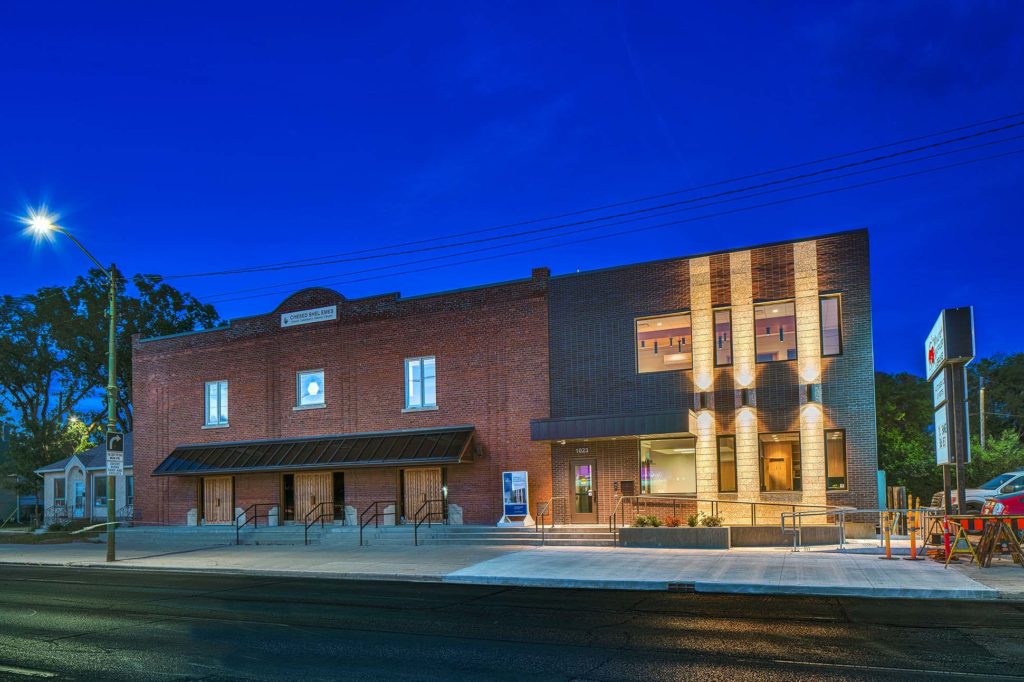
We’re delighted to share a major milestone in our Capital Campaign, “Building on our Tradition.” Launched in November 2018, this campaign aimed to replace our outdated facility with a modern space tailored to our unique needs. Our new building is designed with ritual at its core, featuring ample preparation space, Shomer space, and storage, creating a warm and welcoming environment for our community during times of need.
We’re grateful to the nearly 1,000 generous donors who contributed over $4 million towards our new facility. A $750,000 mortgage will be retired in November 2025, completing this monumental project in just seven years.
We’re also thrilled to announce that our Chesed Shel Emes Endowment Fund has grown tenfold, from $15,000 to $150,000, thanks to you, the Jewish Foundation of Manitoba’s FundMatch program, and Million Dollar Match initiative in 2024. Our fund helps ensure that everyone can have a dignified Jewish funeral regardless of financial need.
As we look to the future, our goal remains to ensure the Chevra Kadisha continues to serve our community for generations to come. Our focus now shifts to replenishing our savings account and growing our JFM Endowment fund.
We’re deeply grateful for your support over the past several years.
It’s our privilege to serve our community with care and compassion.
With sincere appreciation,
Campaign cabinet: Hillel Kravetsky, Gerry Pritchard, Stuart Pudavick,
Jack Solomon, and Rena Boroditsky
Murray S. Greenfield, President
Local News
Winnipeg Beach Synagogue about to celebrate 75th anniversary
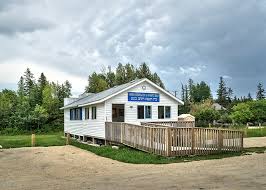
By BERNIE BELLAN (July 13) In 1950 a group of cottage owners at Winnipeg Beach took it upon themselves to relocate a one-room schoolhouse that was in the Beausejour area to Winnipeg Beach where it became the beach synagogue at the corner of Hazel and Grove.
There it stayed until 1998 when it was moved to its current location at Camp Massad.
On August 2nd members of the synagogue will be holding a 75th anniversary celebration.
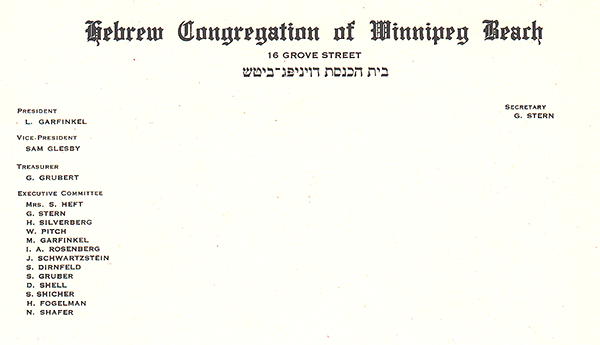
As part of the celebration anyone who is a descendant or relative of any of the original members of the first executive committee (as seen in the photo here) is invited to attend the synagogue that morning.
If you are a relative please contact Abe Borzykowski at wpgbeachshule@shaw.ca or aborzykowski@shaw.ca to let Abe know you might be attending or for more information about the 75th anniversary celebration.
We will soon be publishing a story about the history of the beach synagogue, which is something I’ve been writing about for over 25 years.
Local News
Vickar Family cuts ribbon on new Tova Vickar and Family Childcare Centre
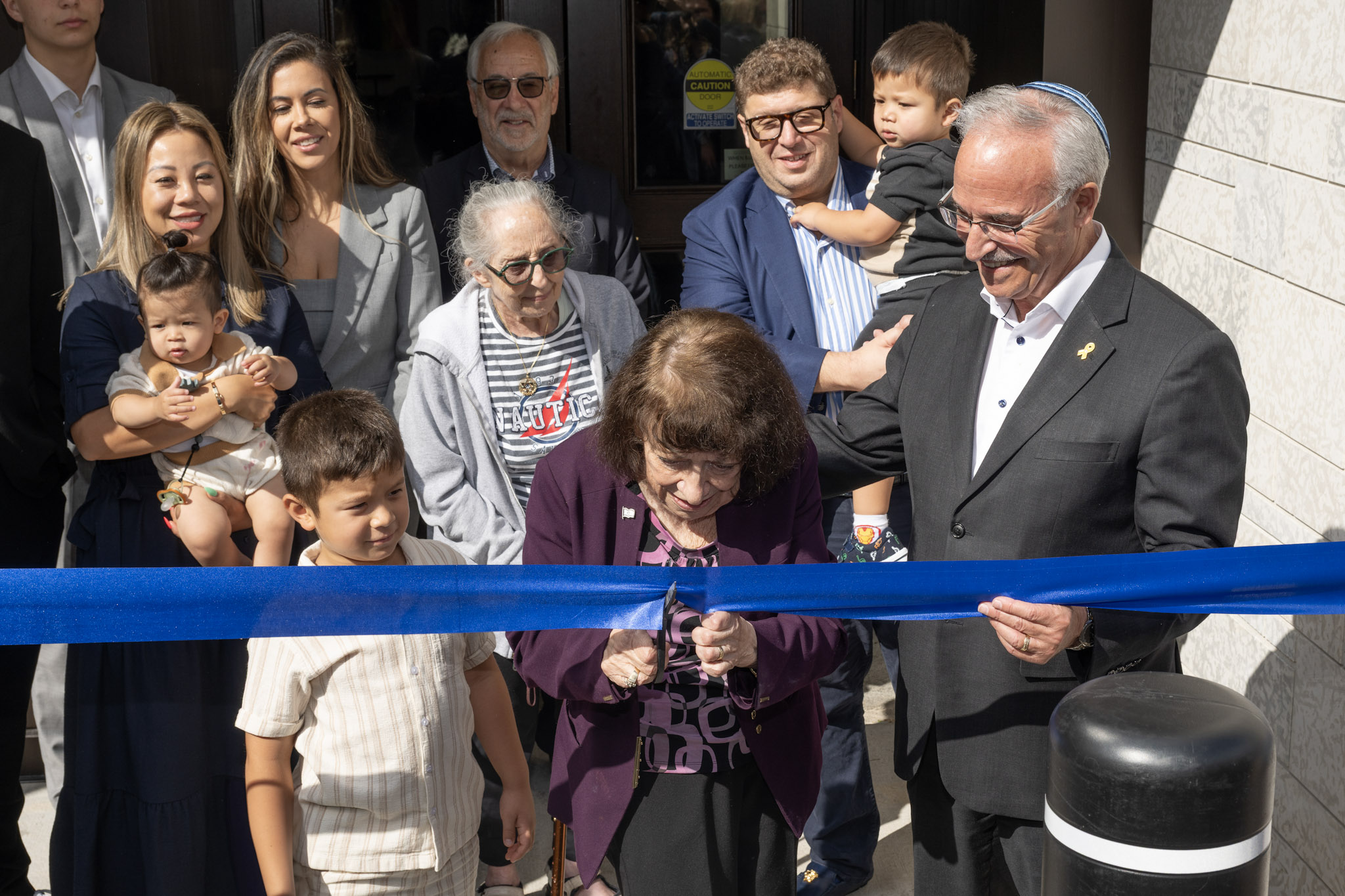
By MYRON LOVE In the words of Larry Vickar, the Shaarey Zedek’s successful Dor V’ Dor Campaign “is not only a renewal of the synagogue but truly a renewal movement of Jewish life in our community.”An integral part of that renewal movement was the creation of a daycare centre within the expanded synagogue. On Monday, June 23, Larry and Tova Vickar cut the ribbon, thereby officially opening the Tova Vickar and Family Childcare Centre in the presence of 100 of their family members, friends and other supporters of the project.
The short program preceding the morning ribbon-cutting began with a continental breakfast followed by a welcome by both Fanny Levy, Shaarey Zedek’s Board President, and Executive Director Dr. Rena Secter Elbaze. In Elbaze’s remarks, she noted that Larry and Tova wanted their family (including son Stephen and family, who flew in from Florida) and friends at the event to celebrate the opening of the Tova Vickar and Family Childcare Centre, “not because of the accolades, but because, as Larry put it, he hopes that their investment in the congregation will inspire others to do the same.”
“When Larry and I spoke about what this gift meant to him and the message he wanted people to take away,” she continued, “I couldn’t help but connect it to the teachings of Reb Zalman Schachter-Shalomi whose book – Age-ing to Sage-ing – changes the whole way we look at the concept of ageing and basing it on our ancestral teachings.”
She explained that his concept of “Sage-ing” is based on three key ideas – Discover your meaning and purpose; accept our mortality and think about the legacy you want to leave.
“Larry spoke about these exact concepts when we met,” she said.
Elbaze also noted the presence of Shaarey Zedek’s newly-arrived senior Rabbi Carnie Rose, former Rabbi Alan Green, and area MLAs Mike Moroz and Carla Compton.
Larry Vickar expressed his great appreciation for all those in attendance. “Tova and I are deeply moved to stand here with you today for this important milestone in our community”, he said. “We are grateful to be surrounded by all of you, the people we care about, our family and friends… you who have touched our lives and played some part in our journey.”
